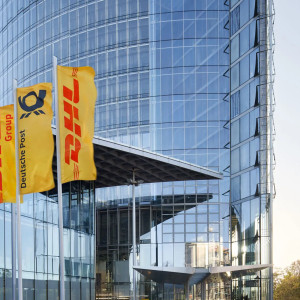DHL freight profit slumps on German road woes


DHL Group began the year with slight but steady financial growth, reporting a 2.8% year-on-year increase in group revenue to EUR20.81 billion for the first quarter of 2025. Operating profit (EBIT) also rose by 4.5% to EUR1.37 billion, while free cash flow excluding mergers and acquisitions jumped 17.4% to EUR732 million.
"Changes in trade policy shaped the first quarter. Financially, we had a strong start to the year 2025," said Tobias Meyer, CEO of DHL Group.
According to the logistics giant[1], performance in the opening quarter was shaped by volatility in global trade and shifts in US customs policy[2].
Despite the subdued macroeconomic environment, DHL attributes its continued momentum to tight cost and yield controls.
"The economic environment in the first quarter of 2025 was characterised by US customs and trade policy and general economic caution," Meyer added. "Nevertheless, we continued the positive momentum of the previous quarters with slight revenue and earnings growth. This is also the result of our stringent cost and yield management. At the same time, we continue to invest in high-growth business areas while working on structurally improving our efficiency."
Net profit after non-controlling interests reached EUR786 million, up 6.2% from Q1 2024, with basic earnings per share improving to EUR0.68 from EUR0.63.
Capital expenditure declined slightly to EUR461 million, from EUR483 million a year earlier. The Group reiterated its full-year guidance, targeting EBIT of at least EUR6 billion and free cash flow of approximately EUR3 billion, excluding M&A. However, the company cautioned that potential changes in global trade policy could have both negative and positive effects on future results.
Freight stumbles, parcels surge: mixed picture across DHL divisions
Across its business divisions, DHL Express posted a 2.0% increase in revenue to EUR6.13 billion and a 4.8% rise in EBIT to EUR662 million, despite lower volumes of time-definite international shipments.
The company attributed the improvement to capacity management and pricing measures. DHL Global Forwarding, Freight saw revenue climb by 3.2% to EUR4.76 billion, yet EBIT fell sharply by 23.2% to EUR202 million. The decline was primarily linked to economic weakness in the German and broader European road freight markets.
The Supply Chain division[3] maintained its growth trajectory, with revenue up 1.1% to EUR4.38 billion and EBIT increasing 4.8% to EUR268 million. Automation and new contracts helped lift productivity and margins. DHL eCommerce grew its revenue by 7.5% to EUR1.76 billion, though EBIT fell by 9.2% to EUR52 million.
The company cited increased depreciation costs related to ongoing strategic investments in its network. Meanwhile, Post & Parcel Germany recorded a strong performance, with revenue up 3.8% to EUR4.43 billion and EBIT surging 44.6% to EUR281 million. The boost was driven by a postage rate increase, demand during the federal election mail ballot, and growth in the parcel segment.
DHL doubles down on healthcare, automation and cost-cutting
The Group highlighted progress in its "Fit for Growth" programme, launched in March as part of its Strategy 2030 initiative.
The programme aims to structurally reduce the company's cost base by over EUR1 billion by 2027.
Investments are also being directed toward high-growth sectors, particularly healthcare logistics and sustainable transport.
By 2030, DHL Group plans to invest EUR2 billion in its new "DHL Health Logistics" brand, positioning itself to meet rising demand for pharmaceutical distribution and clinical trial logistics.
References
- ^ According to the logistics giant (trans.info)
- ^ shifts in US customs policy (trans.info)
- ^ The Supply Chain division (trans.info)